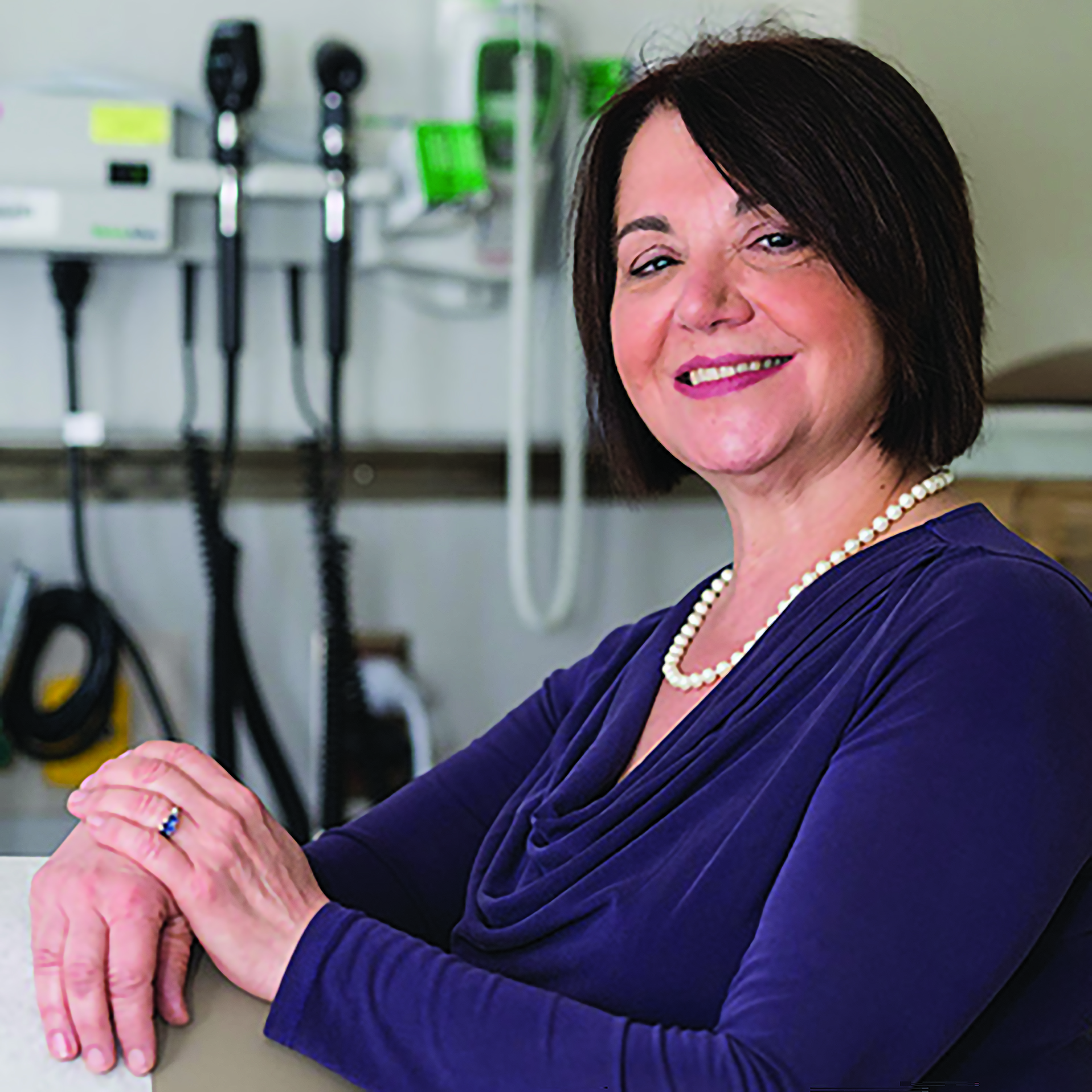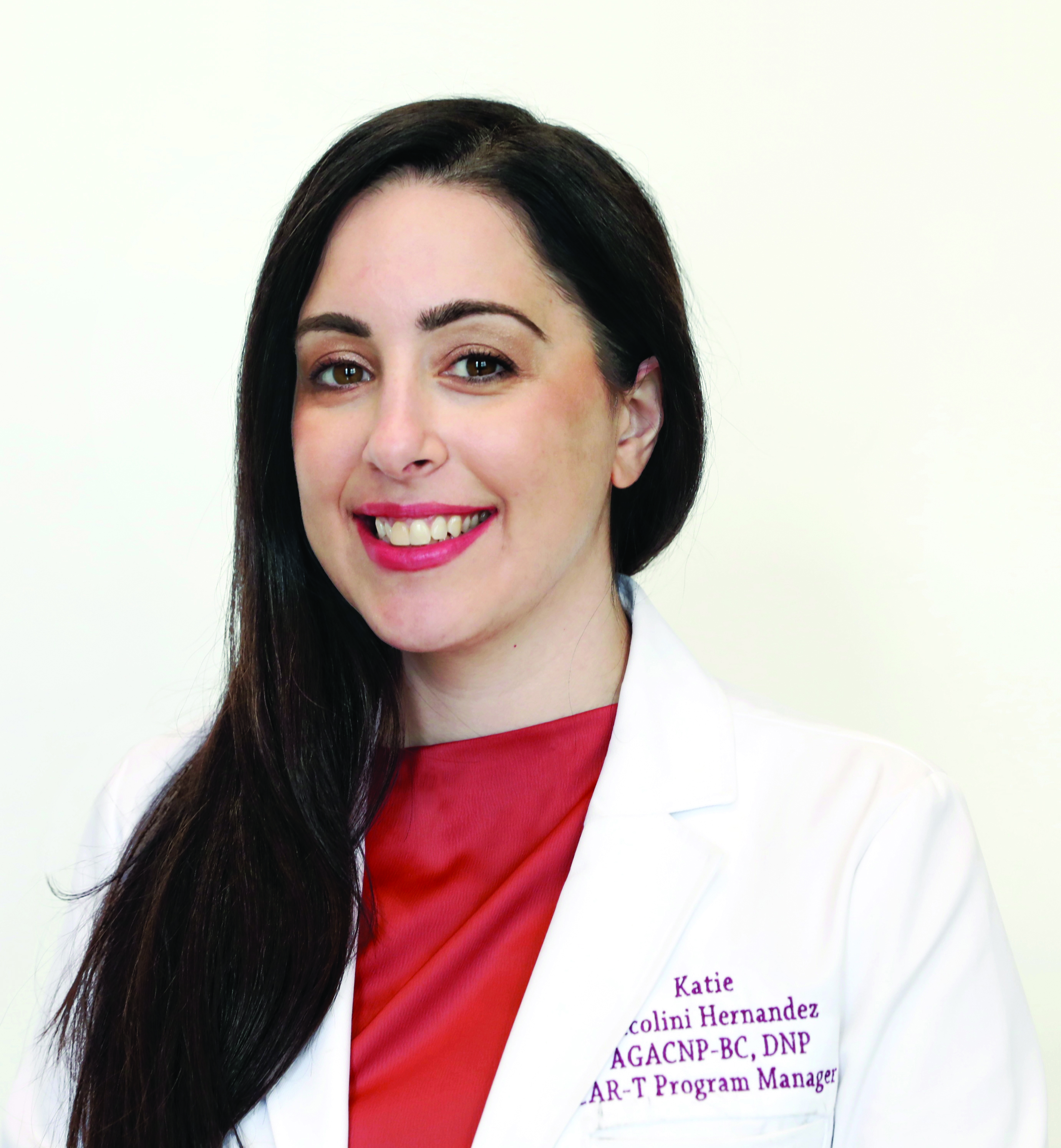Most nurses have not received formal training in quality improvement (QI) methodology, and many workplaces lack the resources to efficiently implement evidence-based practice (EBP), which results in delays in translating science into practice. But ONS members are overcoming those barriers and leading the way in effectively developing, implementing, and sustaining practice changes.
How Quality and Evidence Are Optimizing Cancer Care
QI initiatives in the healthcare setting are associated with increased patient safety and quality of care. They typically don’t involve extensive literature reviews and are usually specific to one institution. EBP, on the other hand, integrates the best-available, research-supported evidence with clinical expertise and patient values to improve outcomes. QI improves patient care in specific healthcare settings, and EBP translates knowledge that broadly improves health care throughout the field.

ONS member Lorraine Drapek, DNP, FNP-BC, AOCNP®, nurse practitioner (NP) of radiation oncology at Massachusetts General Hospital in Boston, past president and current member of the Boston ONS chapter, and member of the Southern New Hampshire ONS Chapter, developed a continuity of care program at her institution to minimize vaginal effects in patients with lower gastrointestinal and gynecologic cancers. Drapek’s goal was simple: increase patient awareness.
“The program rose out of a need for improved assessment and patient education regarding long-term effects of radiation that hinder quality of life and sexual function. It began as a three-visit program, with a goal of being proactive in helping patients address those issues,” Drapek said.
Patients met with Drapek during their first week of radiation treatment, at the end of treatment, and at 6–12 weeks post-treatment. During the visits, Drapek provided educational diagrams, handouts and instructions on vaginal lubricants and moisturizers, a booklet on vaginal dilation, and a diary to record their progress. Patients then followed up every three to six months or later as needed.
After three months of treatment, 80% of patients were using vaginal dilators and had returned to sexual activity. With such success, Drapek said, services that did not involve pelvic radiation requested to refer patients to the program.
“The radiation oncology department saw the program’s value, and it has remained a part of our care continuum,” Drapek said. “I expanded my practice through education and mentorship to include patients of all genders and cancer diagnoses, including those with metastatic disease.”

ONS member Kathryn Ciccolini, AGACNP-BC, DNP, MSN, OCN®, clinical program manager of cellular therapy at Mount Sinai Health System in New York, NY, and member of the New York City ONS Chapter, developed a telephone triage QI initiative through her doctorate of nursing practice (DNP) program at Johns Hopkins University.
“My project was a three-part workshop that involved a didactic lecture, group case scenario, and virtual triage simulation,” Ciccolini said. “Most participants enrolled in the program online, which enabled self-paced learning.”
All participants underwent pretesting for knowledge and confidence through an online survey the month before their first session. They also completed a pre- and post-test simulation of a common triage scenario for oncology nurses, which included an individual assessment, standardized case scenario, and skills checklist. Ciccolini found that nurses’ confidence and skills significantly improved after completing the workshop.
“When I began my role as clinical program manager, I used the same abbreviated formula to solve the large issue of optimizing our institution’s process for the commercial CAR T-cell risk evaluation and mitigation strategy (REMS) program,” Ciccolini said. “I was able to reduce REMS-required staff by 85% while providing equal education opportunities to the entire hospital. Right away, I felt like I was directly applying my doctoral education to my new role.”
Identifying and Bridging Gaps in Care
“I heard multiple patients say, ‘I’m worried about staying alive right now and not worried about sex,’ but patients also wanted to be aware of the long-term side effects of treatment,” Drapek said. “I recognized the need for nurses and other providers to clarify to patients that they will complete treatment and sexual health will become important.”
Drapek reviewed the literature and found that use of vaginal dilators can help prevent long-term sexual dysfunction in patients receiving pelvic radiation. She and colleague Jennifer Wo, MD, developed a sexual needs assessment for patients who were receiving or had received pelvic radiation and were in follow-up. They found that sexual health issues had worsened in the follow-up population and that 75% of patients agreed that a sexual health clinic would be beneficial in a radiation oncology department. Most patients also believed that sexual function should be brought up by a provider and were most comfortable discussing the topic with a nurse or NP.
“I had also developed a pilot program for female patients receiving pelvic radiation for my DNP project,” Drapek said. “So, I had a bank of knowledge and resources from completing a literature review, contacting experts in the field, and seeking out mentors.”
Ciccolini said that she used a formula for practice change that incorporates EBP and her clinical experience, including problem identification, stakeholder and organization analysis, literature review, project development, implementation, and evaluating and sustaining change. She also sought help from her institution’s leadership, research, and education departments, and her university’s nursing faculty.
“We identified the problem through extensive stakeholder analysis and found that nurses received no standardized educational training for telephone triage during orientation or throughout employment,” Ciccolini said. “Nurses, leadership, and educators all expressed the need for improved nurse confidence, knowledge, and skill. So, I assessed current practice in terms of telephone triage assessment, escalation to a provider, and care coordination and follow-up.”
Ciccolini conducted a literature review of the existing QI measures and models, performed a gap analysis, and created a solution. After implementing the program, she found that, at baseline, participants largely needed policies to address telephone triage and guide practice as well as formal education during orientation.
“Challenges when performing telephone triage were related to knowledge, confidence, and skill,” Ciccolini said. “I found that nearly all participants did not use formal models or frameworks to conduct telephone symptom assessment, coordinate care, or communicate with providers. So that is what my QI project addressed.”
Overcoming Project Barriers
“I think one of the biggest challenges and obstacles for QI is that not all projects can be done timely in such extensive depth,” Ciccolini said. “Another struggle, specifically for DNP projects, is the literature search and synthesis of evidence. Most students are encountering big data for the first time, and it can be information overload."
In a cross-sectional study of 760 nurses and midwives, researchers found that only 34.7% of participants desirably implemented EBP. The most common barriers were insufficient time, challenges with prioritizing QI among other duties, and difficulty judging research quality. Results from another study showed that competence and motivation also affected institutions’ ability to sustain QI efforts and that hospital managers’ autonomy and adaptive capacity to tailor QI efforts were key to any relevant impact on practice.
Ciccolini and Drapek recommended that nurses identify problems through stakeholder analysis and suggested starting with the smaller findings.
“Consider addressing just one question or gap in care and becoming comfortable with that,” Drapek said.
Drapek encouraged nurses interested in practice change at their institution to explore literature on the topic, develop a resource list, and gauge provider comfort through needs assessments. (See the sidebars for a variety of resources for EBP and QI.)
To make sure teams are confident about practice changes and equipped to successfully implement them, Ciccolini said that nurse leaders should:
- Integrate QI into staff orientation.
- Assess current practice and include team input.
- Communicate throughout all milestones.
- Provide rationale behind why the practice is in question.
- Analyze external institutions’ practices.
- Provide tangible measures of change.
- Follow up on changes to ensure sustainability.
“I embrace QI because it helps me advance patient care and become an expert in what I do,” Drapek said. “It also validates my practice.”
“Your project could likely translate into something bigger at your institution or a professional organization, depending on which direction you go in,” Ciccolini said. “But you don’t have to do it all in the prescribed intervention period. Nurses have so many incredible opportunities to create positive change in all healthcare settings.”






